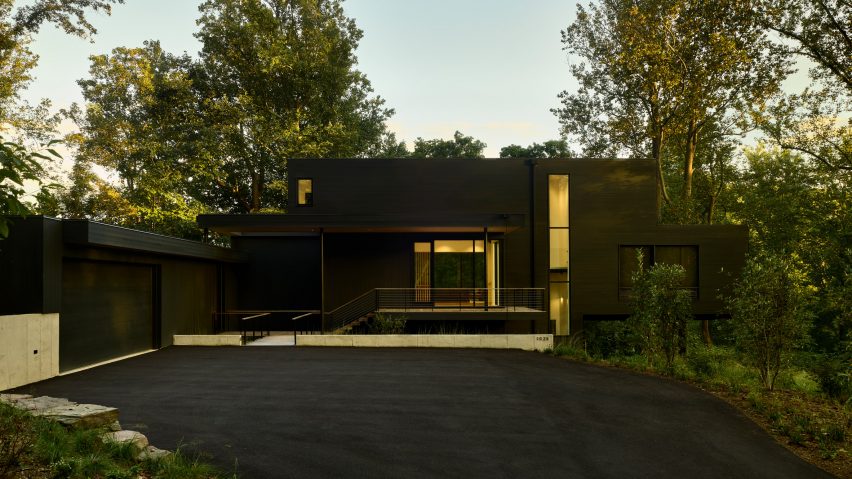
Robert Young Architects designs Virginia Treehouse around a family's experience of loss
This pine-clad home on a forested hillside was designed by US studio Robert Young Architects to provide immersive views of nature and to offer "a sense of optimism" for a family experiencing loss.
The full-time residence sits within a river valley in Virginia, just outside of Washington, DC.

Meant to embody a "sense of connectedness between architecture and landscape", the house was designed to serve as a peaceful refuge for a woman who had recently lost her husband.
She lives there with the couple's children.
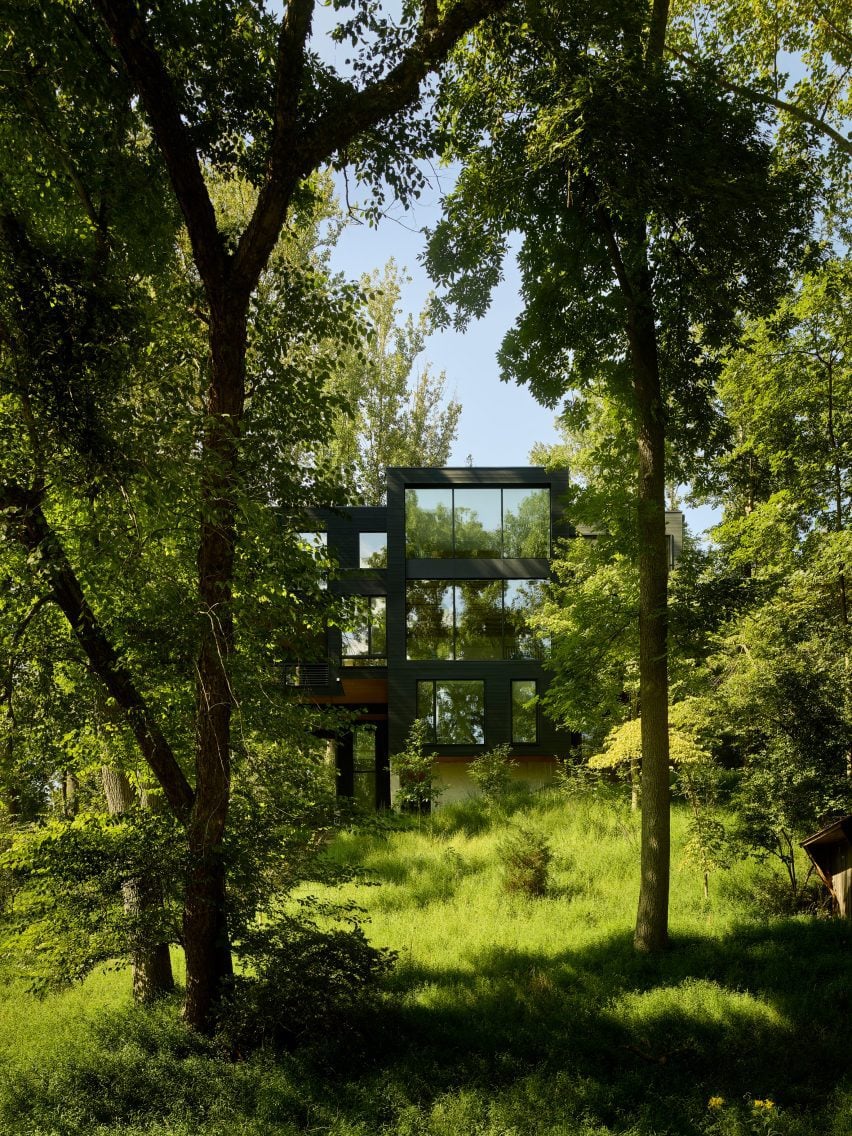
To aid in her healing process, the client – Sue Deagle, who publishes a newsletter and website about grief called The Luminist – was closely involved in the design process.
"She hoped that creating a new home would help her and her family imagine a future with a sense of optimism," said Robert Young Architects, which is based in New York.
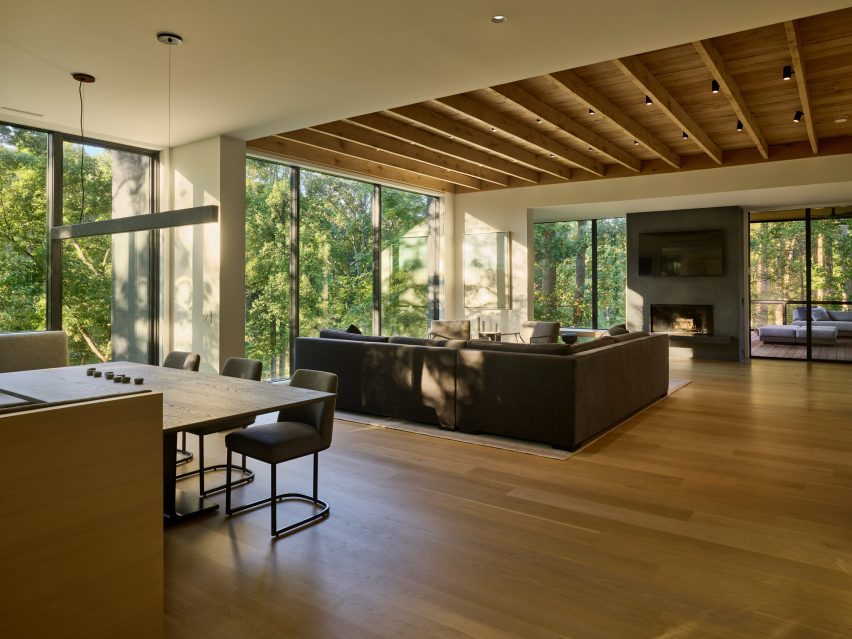
Roughly L-shaped in plan, the home is composed of rectilinear volumes clad in dark-stained pine. The home totals 5,200 square feet (483 square metres), spread across three levels and a basement.
Providing views of nature was a guiding concern, leading the architects to design the house "from the inside out".

"The interiors are configured in a way that choreographs movement through the house in relation to outside views," the team said.
"Diagonal sight lines organize the layout and dynamically connect the interior spaces with the dense and varied woodlands beyond."
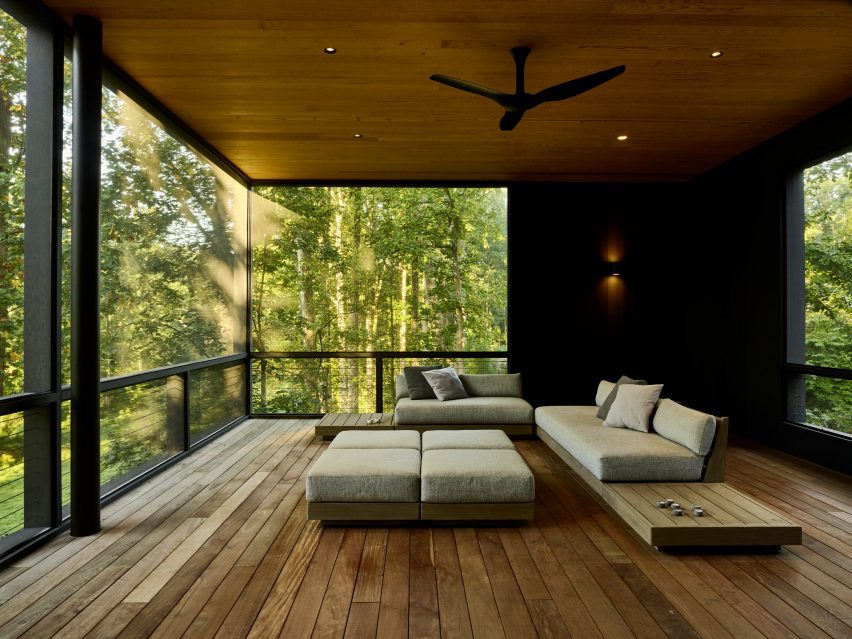
The top level contains the primary bedroom suite and was envisioned as a "forest aerie, perched high in the tree canopy".
The main level encompasses the communal spaces, along with an office, mudroom and garage. Just off the living room is a furnished screened porch, which is lifted high above the ground by steel stilts.
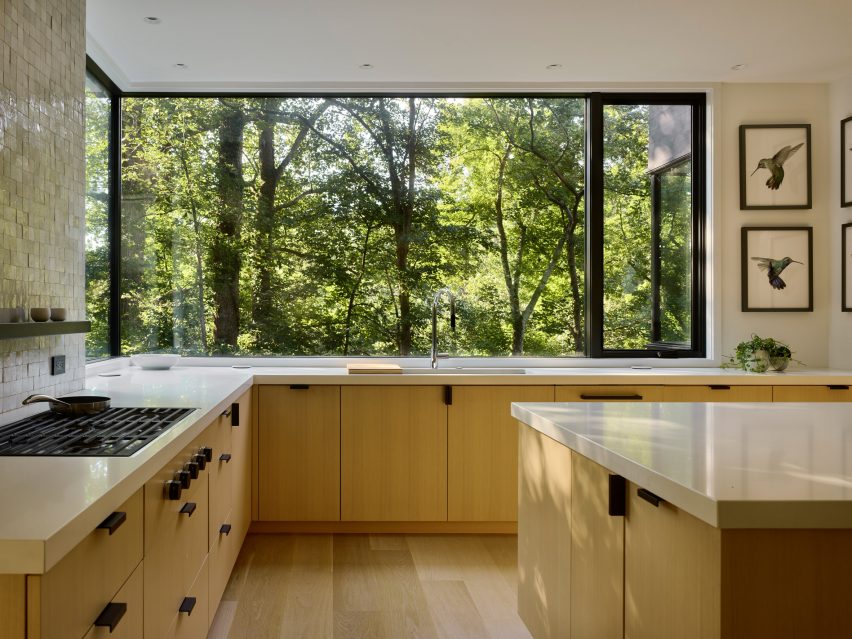
The lower level holds two bedrooms and a laundry room, while the basement contains guest quarters, a recreation room and mechanical space.
The interior features a mix of earthy and industrial materials, including white oak, tile and concrete.
"Oak surfaces create a sense of warmth, while concrete elements authentically convey durability and strength," the team said.
Throughout the home, windows were carefully placed to offer curated views of landscape, and certain walls were kept solid to obscure views of nearby structures.
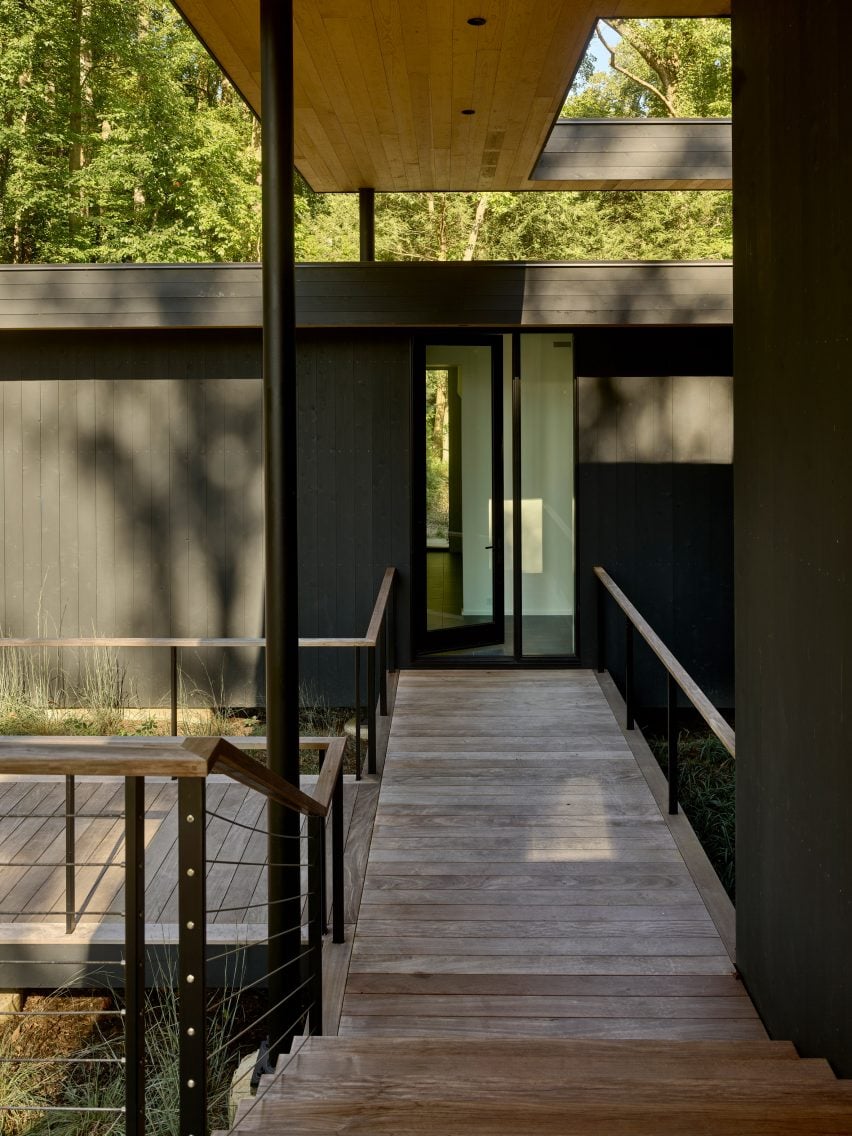
"At the bottom of the valley, the view is anchored by a floodplain and watercourse appropriately named Difficult Run for its many obstructions," the team said.
"The house was situated and designed to celebrate everything about these sensitive ecologies."
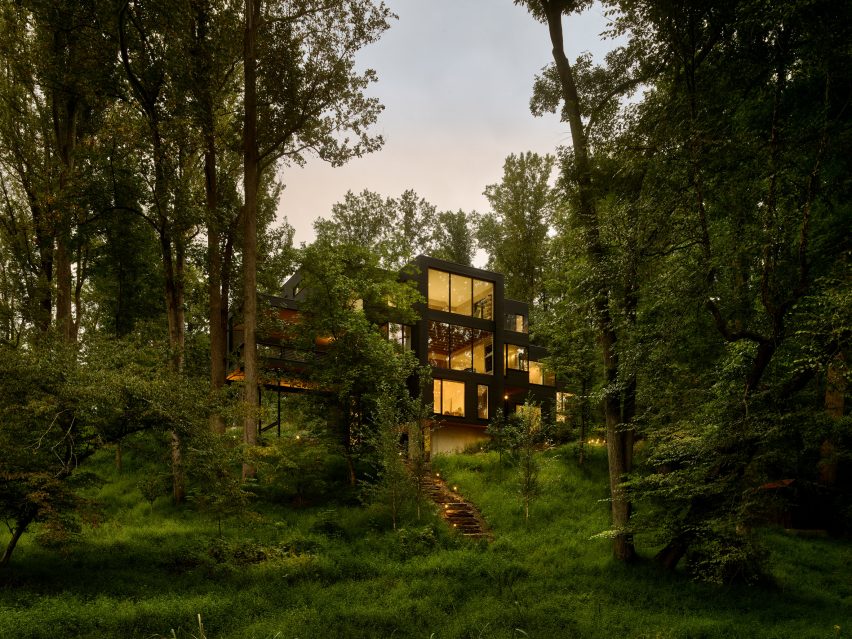
Other projects by Robert Young Architects include a weekend home in Montauk, New York, that is clad in rough-sawn cedar plants that were left untreated so they can age naturally.
The photography is by Frank Oudeman.